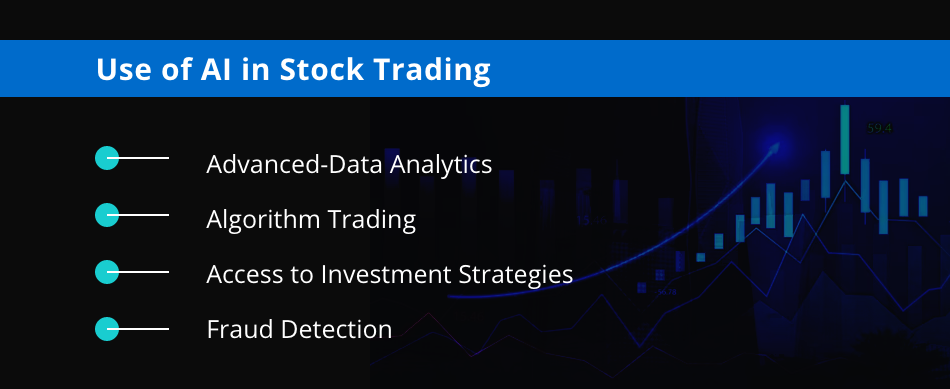20 Handy Ideas To Deciding On AI Stock Investing Platform Websites
20 Handy Ideas To Deciding On AI Stock Investing Platform Websites
Blog Article
Top 10 Tips To Assess The Market Coverage Provided By Ai Trading Platforms That Forecast Or Analyze The Performance Of Stocks.
Market coverage plays an important aspect in evaluating an AI stock-predicting/analyzing trading platform, as this will determine your ability to access a vast variety of financial and asset markets. A platform that has extensive market coverage lets you diversify your portfolio, explore new opportunities around the world, and adjust to a variety of trading strategies. These are the top ten ways to evaluate the market coverage of these platforms.
1. Evaluate Supported Asset Classes
Stocks: Ensure your platform supports major stock exchanges, including NYSE, NASDAQ LSE and HKEX, and that it includes small, mid and large caps.
ETFs. Check that the platform provides a range of ETFs to have a diverse exposure.
Options and futures. Check that the platform is compatible with derivatives, such as futures contracts, options, and leveraged instruments.
Forex and commodities: Find out if your platform offers commodities and forex, precious metals, and energy commodities.
Cryptocurrencies. Verify if the currency supports the major altcoins and cryptocurrencies (e.g. Bitcoin, Ethereum).
2. Check coverage in the geographic area.
Global markets: The platform should be able to cover the major global markets, including North America and Europe, Asia-Pacific and emerging markets.
Regional focus: Find out if the platform specializes in certain regions or markets that align with your interests in trading.
Local exchanges: Verify if your platform supports local and regional exchanges that match your needs or your strategy.
3. Assessment Real-time vs. Delayed Data
Real-time data: Ensure that your platform is equipped with real-time information for trading, and for making timely decisions.
Delayed data: Check if delayed data is available for free or at a cheaper cost, which could be sufficient for investors who are looking to invest long-term.
Data latency - Verify that the platform reduces latency of real-time feeds. This is especially important for traders with high frequency.
4. Assess Historical Data Availability
Historical data depth: Verify that the platform has ample data (e.g. over 10 years old) to backtest.
Granularity: Check if the historical data includes the intraday granularity aswell with weekly, daily and monthly.
Corporate actions: Verify if historical data accounts for dividends, stock splits and other corporate actions.
5. Review market depths and make an order for books
Data Level 2: Ensure the platform offers Level 2 (order book depth) to provide better price discovery.
Spreads of bids: Make sure that the platform is displaying real-time bid spreads to ensure accurate pricing.
Volume data - Verify whether the platform has detailed volume information for analyzing market activities and liquidity.
6. Examine the extent of coverage for Indices and Sectors
Major indices: Make sure the platform is able to handle major indices (e.g., S&P 500, NASDAQ 100, FTSE 100) to benchmark and index-based strategies.
Information for specific industries If you're looking to do a targeted analysis, look into whether there are data available for specific industries.
Custom indexes. Find out if you are able to make or monitor custom indices using your criteria.
7. Evaluation of the integration with News and Sentiment data
News feeds - Ensure the platform has integrated real-time news feeds that contain market-moving stories from reputable (e.g. Bloomberg or Reuters) sources.
Utilize the tool's sentiment analysis based on data from social media, news or other sources.
Event-driven Strategies: Verify whether the platform can support strategies that are triggered by events (e.g. economic reports, earnings announcements).
8. Look for Multimarket Trading capabilities.
Cross-market trade: Make sure the platform permits trading across markets and asset categories through a single interface.
Currency conversion: Verify if the platform allows multi-currency accounts as well as automatic currency conversions to trade internationally.
Support for various time zones: Make sure the platform supports trading globally on markets across different time zones.
9. Examine the coverage of alternative data Sources
Alternative data: For more unique insights, confirm that your platform utilizes other data sources (e.g. satellite imagery web traffic, satellite imagery, or credit card transactions).
ESG data: Verify whether the platform has environmental social, governance, and (ESG) data for socially responsible investment.
Macroeconomic data - Ensure that the platform has macroeconomic information (e.g. GDP, inflation) to perform fundamental analysis.
Review Market Reputation and User Reviews
User reviews: Examine user reviews to assess the platform's market coverage as well as its reliability and usability.
The reputation of the company: Find out if the platform has been recognized by industry experts for its market coverage.
Testimonials and case studies They will showcase the platform's performance in specific market segments or asset classes.
Bonus Tips
Trial period: You may try the demo, trial, or a free trial to check the coverage of markets and the data quality.
API access Make sure to check whether the API of the platform permits an analysis that is custom made by using market data.
Customer Support: Make sure that the platform is able provide support for any data-related or market-related issues.
Following these tips can aid you in assessing the market cover of AI software for predicting and analyzing stocks. You will be able select one that offers access to markets and data to ensure efficient trading. You can broaden your portfolio and profit from new opportunities using a broad market coverage. Take a look at the top ai for trading for site tips including ai for stock predictions, ai chart analysis, investing ai, ai stock picker, stock ai, options ai, trading ai, ai stock trading bot free, ai investment platform, ai for trading and more.
Top 10 Tips For Evaluating The Transparency Of Ai Trading Platforms Which Predict Or Analyze Stock Prices
Transparency is an important factor to take into consideration when considering AI stock prediction and trading platforms. Transparency allows users to verify predictions, be confident in the platform, and comprehend how it works. These are the 10 best ways to gauge the level of transparency in these platforms.
1. AI Models explained in detail
Tip: Check whether the platform offers an explicit description of the AI models, algorithms and platforms that are used.
The reason is that understanding the basic technologies helps users evaluate the reliability of their products.
2. Disclosure of Data Sources
Tip : Determine if the platform discloses which sources of data are being used (e.g. historical stocks, news and social media).
What's the reason? Knowing where data comes from helps ensure the platform uses complete and accurate data.
3. Performance Metrics & Backtesting Results
Tip - Look for transparent reports on the performance metrics, such as the accuracy rate, ROI, and backtesting.
This will give users to evaluate the performance of their previous platforms with those on the current platform.
4. Updates and notifications in real-time
Tip: Check to see whether there are any real-time notifications, updates, and trades on the platform.
The reason: Real-time transparency makes sure that users are informed at all times about important actions.
5. Limitations Communication open
Tip: See if your platform clarifies the limitations and risks of the strategies used to trade and the forecasts it makes.
Why? Acknowledging limitations helps build trust, and allows users to make informed decisions.
6. Users can access the raw data
Tip: Check if users have access to raw data, or even intermediate results utilized by the AI models.
What's the reason? Users can do their own analysis with raw data and confirm their findings.
7. Transparency of Costs and Fees
Check that the platform clearly outlines the subscription fees as well as hidden charges.
The reason: Transparent pricing avoids cost-insane surprises and helps build trust.
8. Regular report and audits
Check if your platform is regularly audited by third party auditors or if it provides reports on its performance.
Why: Independent Verification adds credibility, and also ensures accountability.
9. Predictions that can be explained
TIP: Search for information about how the platform generates specific predictions or recommendations (e.g. important features and decision trees).
Explainability can help users understand the reasoning of AI-driven decisions.
10. User Feedback Channels and Support
Tips: Find out whether there are channels of communication for users to provide feedback and receive support. Also, consider whether it is clear in the way it responds to issues raised by users.
The reason is that responsive communication indicates an interest in transparency and customer satisfaction.
Bonus Tip: Regulatory Compliance
Be sure that the platform follows and is clear regarding its compliance with the financial regulations. This adds a layer of trustworthiness and transparency.
When you evaluate these features, you can decide whether or not the AI trading platform or stock prediction is transparent. You will then be able make educated decisions and have confidence in the capabilities of AI. Take a look at the top rated ai share trading for site recommendations including ai stock investing, best ai trading platform, can ai predict stock market, ai investment tools, stock predictor, can ai predict stock market, free ai stock picker, best ai stocks to buy now, stocks ai, invest ai and more.